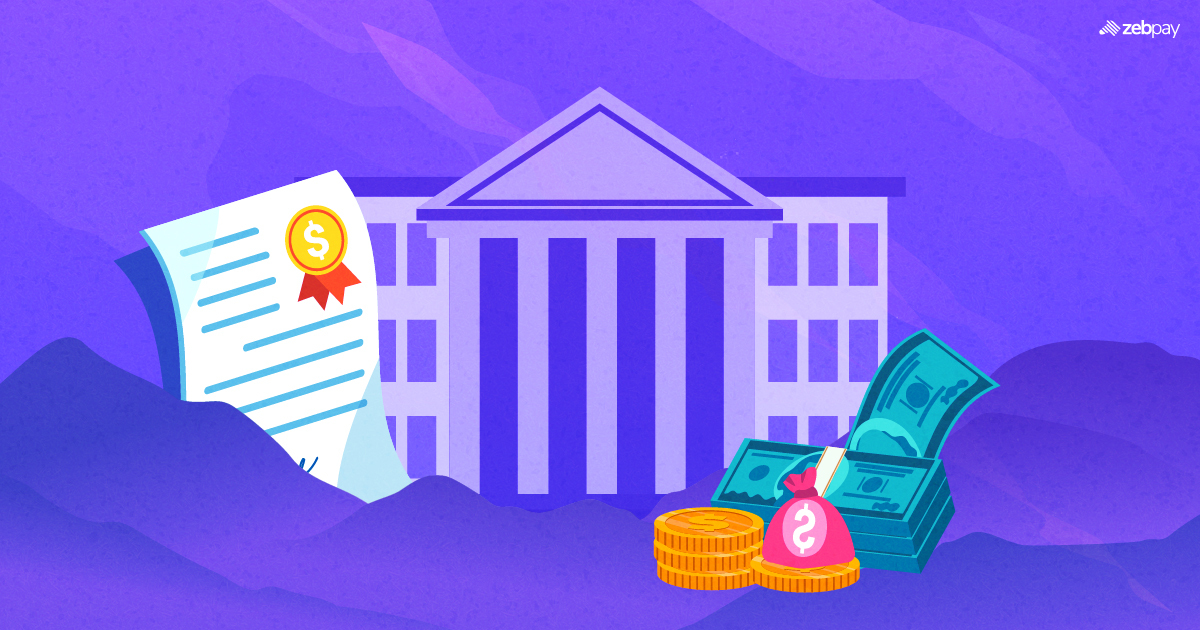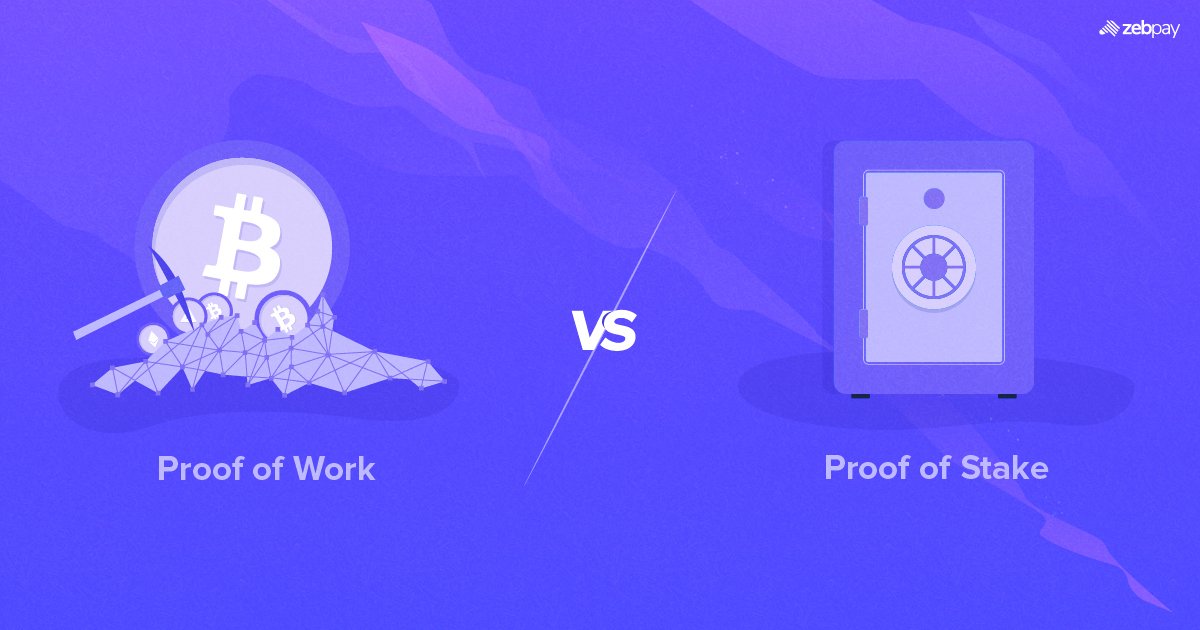18th October 2023 | ZebPay Trade-Desk
Quantitative Easing (QE) is a monetary policy tool employed by central banks to stimulate economic growth, especially when traditional measures like adjusting interest rates are less effective. Here’s how QE works:
- Asset Acquisition: The central bank, such as the Federal Reserve, initiates QE by purchasing financial assets. This includes government bonds, corporate bonds, or mortgage-backed securities. These assets are acquired from commercial banks, financial institutions, and sometimes from the open market.
- New Currency Issuance: To fund these asset purchases, the central bank issues new currency. This effectively increases the money supply in the economy.
- Asset Sellers: The central bank provides the newly created money to the sellers of the assets, often commercial banks. In return, these banks transfer the assets to the central bank.
- Lower Yields: By buying significant quantities of assets, particularly government bonds, the central bank increases the demand for these assets. As a result, their prices rise, and their yields (interest rates) fall. Lower long-term interest rates encourage spending, borrowing, and investments in riskier assets like stocks and real estate.
The use of QE often occurs in response to economic challenges, such as the impact of a recession or, as in the case mentioned, the economic fallout from the COVID-19 pandemic. The central bank’s balance sheet expands as the assets it acquires are added to its holdings. However, QE carries certain risks, especially in relation to inflation. If the growth of goods and services in the economy doesn’t keep pace with the increase in the money supply, it can lead to rising prices. The extent of this risk depends on multiple factors, including the overall economic health and the central bank’s ability to manage the money supply effectively.
QE Implications for Crypto Assets
Here are some key points to consider regarding the relationship between QE and crypto assets:
- Supply Dynamics: In traditional QE, central banks buy assets to increase the money supply. Crypto assets like Bitcoin (BTC) have capped supplies, meaning there’s a fixed limit to the number of coins that can ever be created. These supply dynamics can lead to significant price fluctuations based on scarcity, which is a unique aspect of a few crypto assets.
- Forks and Airdrops: In the crypto world, there are instances where new tokens are distributed to existing holders. While this can be seen as a way to expand the token supply, it’s typically not a result of monetary policy decisions but rather driven by technical developments or community choices.
- Stablecoins and Collateral: Some stablecoins, which are pegged to real-world assets, might resemble QE in certain aspects. If a stablecoin issuer mints more tokens backed by additional collateral, it can be perceived as expanding the money supply, but this isn’t equivalent to traditional QE.
- Market Dynamics: Crypto markets can experience price fluctuations due to factors such as market sentiment, technological advancements, regulatory changes, and macroeconomic trends. These price movements are sometimes likened to how monetary policy influences traditional assets, but the mechanisms are inherently different in the crypto world.
How does it work?
QE is authorized by central banks like the Federal Reserve (in the U.S.), the European Central Bank, or the Bank of Japan. It’s used when conventional policies, like adjusting interest rates, are less effective in addressing economic challenges.
- Economic Conditions: The central bank assesses the economic conditions, typically during recessions or times of low inflation, that necessitate QE intervention.
- Announcement: The central bank announces its intention to purchase financial assets, such as government bonds or other securities, from the open market. This declaration stimulates demand for these assets and causes their prices to rise.
- Asset Purchases: To execute QE, the central bank digitally creates new money. This new money is used to purchase assets from the market. The sellers of these assets are often banks or financial institutions.
- Money Supply Growth: The money paid to sellers increases the money supply in the economy. This liquidity injection aims to encourage borrowing, investment, and spending.
Read more: Guide On Crypto Investing
The main goals of QE are to boost economic activity, lower long-term interest rates, encourage lending, investment, and spending, and mitigate deflationary pressures. It’s a strategy used by central banks to navigate challenging economic conditions and stimulate growth.
The impact of quantitative easing (QE) on crypto assets can be complex and indirect. Here are some key points to consider:
- Store of Value: When central banks engage in QE by injecting money into the economy and lowering interest rates, it can devalue fiat currencies. In response to this devaluation, some investors may seek alternative stores of value. Crypto assets, particularly Bitcoin, have been considered by some as a hedge against currency devaluation. This increased demand for crypto assets could potentially drive up their value.
- Indirect Influence: It’s important to note that the impact of QE on crypto assets is indirect. It doesn’t result from the mechanisms of QE but from investor reactions to the economic conditions influenced by QE.
- Complex Ecosystem: Crypto assets exist within a unique ecosystem influenced by various factors beyond traditional monetary policy. These factors include market sentiment, regulatory changes, technological advancements, and adoption trends.
- Market Dynamics: The interaction between traditional financial markets and the distinct characteristics of crypto assets can lead to a complex interplay of factors affecting crypto prices.
QE has been criticized for its potential drawbacks and limitations. Here are some of the key criticisms:
- Escalating Inequality: QE measures often benefit asset owners, particularly the wealthy who own financial assets like stocks and bonds. This can exacerbate income inequality, as the benefits of QE may not be evenly distributed across the population.
- Market Distortions: The increase in liquidity resulting from QE can fuel excessive speculation and asset bubbles in financial markets. This can lead to unsustainable price increases in assets such as stocks and real estate, distorting market valuations.
- Crypto Market Volatility: Increased liquidity from QE can also contribute to higher volatility in crypto markets, potentially making them less attractive to traditional investors due to the associated risks.
- Modest Impact on Inflation and Growth: QE’s impact on inflation and real economic growth may be limited, particularly in times of uncertainty or when interest rates are already very low. It may not significantly boost consumer spending or business investment.
- Distorted Financial Markets: QE can distort financial markets by artificially lowering interest rates and distorting the yield curve. This can make it challenging for investors to assess risk accurately and allocate resources efficiently.
- Reduced Effectiveness Over Time: If central banks rely heavily on unorthodox monetary measures like QE, their effectiveness may diminish over time, leaving fewer tools available to address future economic challenges.
- Currency Devaluation: QE can lead to a weaker domestic currency, which may result in issues related to global trade imbalances and competitive currency devaluation.
Read more: What Is Dollar Cost Averaging In Crypto
In summary, while QE can be a valuable tool during economic crises, it is not without its criticisms and limitations. Its impact on various aspects of the economy, including inequality, market dynamics, and financial stability, can be a subject of debate and concern.







